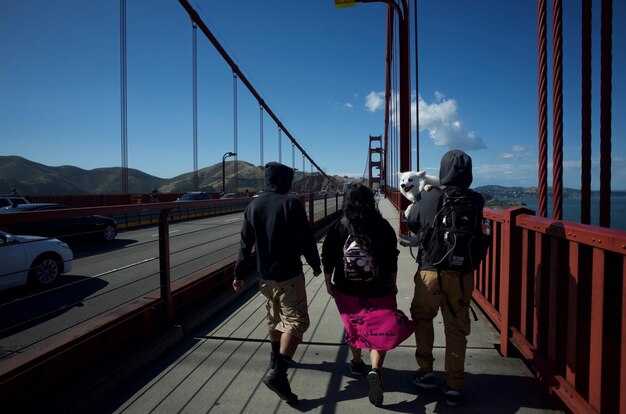
Reserve your airport pickup in advance and keep your phone charged to confirm the driver on arrival. This step ensures a smooth start in the current conditions and helps you avoid delays at the terminal.
What you have found after landing are clear street signs, a staffed arrivals desk, and a pickup zone located near the terminal. The guía in your hand offers current tips, maps, and simple routes to your accommodations and first destinations.
When you prepare to move, you can choose either taxi or rideshare to reach your accommodations. To save time, reserve pickup in advance through the official app or desk. Taxis queue outside the arrivals area, and some hotels provide a shuttle–check the marketing desk for schedules and pickup points.
In this subject of practical steps, you’ll find concise instructions you can act on immediately: confirm your current contact numbers, have the address of your accommodations ready, and note a backup route in case a driver is delayed. For families or solo travelers, even a princess can follow these steps without stress, using straightforward language and clear directions.
Before you leave customs, store emergency numbers on your phone, trust reliable signage, and plan your first street route to your chosen destinations. Ensuring you understand where to go and how to get there will reduce hassles and help you settle in quickly.
Visa types and entry requirements for travelers

Apply for a New Zealand NZeTA and pay the IVL before you depart; if you’re not eligible for visa waiver, secure a Visitor visa instead. Do this at least 72 hours before you flight. This step covers your arrival from places like Toronto and beyond, and it speeds up check-in at the airport. Keep digital copies accessible and bring your passport, because those documents carry real weight at the border.
These are the main visa paths for travelers: visa waiver with an NZeTA and IVL, a Visitor visa for longer stays, a Working Holiday visa for eligible ages, and other work or study visas for longer stays. A Transit visa is rarely needed if you stay in the international transit area, but confirm your route before you fly. These options serve different plans, so choose the path that fits your itinerary and budget.
NZeTA and IVL for visa-waiver travelers: eligible travelers obtain an NZeTA online or via the mobile app, then pay the International Visitor Levy (IVL). Processing times range from minutes to a few days, so plan ahead. The NZeTA is valid for multiple entries over a period of up to about 2 years, as long as your passport stays valid. The IVL is a separate NZD charge that supports conservation and tourism services. When you arrive, you’ll still go through standard border checks, and the rules help keep New Zealand safe for everyone.
Visitor visa when you’re not eligible for the NZeTA: apply online before travel. This visa lets you stay in New Zealand for up to nine months per visit (checking your specific grant length at application), with proof of funds, onward travel, and accommodation arrangements. These requirements are designed to demonstrate you can support yourself and your plans without relying on local work.
Working Holiday and other work- or study-related visas: if you plan to work to fund your trip, or study for a short period, explore the Working Holiday, Accredited Employer Work Visa, or Student visa routes. Ages and eligibility vary by country, but these paths generally require a job offer or study enrollment, health checks, and a clear timeline. For travelers arriving with family or friends (including boys), these options can align with longer stays and flexible travel budgets.
Transit and other considerations: if you only transit through New Zealand and don’t leave the airport’s international zone, you may not need a visa; otherwise, check the exact visa category for your situation. Always verify your specific case online, using the internet to confirm documents, processing times, and submission steps. These checks ensure you’ve chosen the most convenient option for your itinerary.
Entry requirements at the border: ensure your passport is valid for at least 3 months beyond your planned departure date. Carry evidence of your onward travel and sufficient funds, and be ready to show proof of accommodation for at least your first nights. When you arrive, you may be asked for a return or onward ticket, travel insurance, and sometimes a brief outline of your plan while you’re in the country. If you’re traveling with family or pets, bring their documents as well; the border team will review these with safety in mind.
Practical tips for a smooth entry: download and keep a copy of your NZeTA receipt or visa grant, along with IVL confirmation. Upon arrival, head to the check-in area for immigration first, then collect luggage and proceed to border control. If you arrive in a city with a vibrant waterfront, such as Auckland’s waterfront, use a convenient airport-to-city option and arrange accommodations in advance. If you arrive from Toronto or elsewhere with companions, plan a short buffer before your first night’s accommodations to avoid stress. For those bringing dogs, confirm pet import rules and quarantine requirements before you carry them on the plane; your training certificates, vaccination records, and vet visits may be requested. In case of illness or an accident, know the location of the nearest hospital and have travel insurance that covers medical care, which greatly enhances safety during your stay.
Prepare for the trip with practical steps: organize these documents, keep them in a carry bag you can access easily, and leave room in your schedule for potential delays at the airport. A highly organized plan makes your arrival seamless, and it also helps you settle into your chosen accommodations quickly. Your own preparation sets the tone for your NZ visit, so carry what you need and stay flexible while you explore the country’s diverse landscapes and friendly people.
What to expect at the airport: immigration, customs, and biosecurity
Have your passport and any required visa or ETA ready to arrive, and start the process with a calm, confident approach. Immigration officers are friendly and efficient; they will ask questions about where you will stay, how long you’ll be in the country, and who travels with you. If a form is requested, fill it promptly. In addition, follow the signs to the correct channel, and keep your documents handy so you don’t hold up others. In zealands, signage and staff are trained to move passengers smoothly. There are many steps, but the experience remains comfortable for most passengers and families. You should stay relaxed and organized to speed things along, and you should not stop moving until you receive clearance.
After clearance, walk to baggage claim, collect your luggage, and exit through the doors into the arrivals area. If your hotel is in the city or in Hillcrest, you can choose to walk to nearby transport hubs or take a taxi or rideshare. Costs for transfers to central city vary by method, but a standard taxi typically starts around NZD 40–50, while rideshares are often cheaper. The airport offers a range of transport options to start your onward journey, and the signage helps you choose the best route. Queues move at a steady pace; you should keep a comfortable distance, often a few feet from the person ahead.
At customs, declare any items that may require checks. Keep receipts for large purchases; you may be asked to show these. Follow the green channel if you have nothing to declare; use the red channel if you need to declare items or restricted goods. The staff will guide you and handle any questions. This step helps many travelers avoid delays and ensures compliance with local rules.
Biosecurity checks will review your luggage for prohibited items; you may be asked to open bags and handle carry-on items for inspection. Be honest about foods, plants, or animal products, and declare them if required. The officers can stop you briefly to verify items, and the process is designed to protect New Zealand’s environment. Keep in mind common restrictions and ensure your items are clearly packaged to reduce delays.
takeaways: arrive prepared with all documents, expect a total arrival time of about 45–60 minutes, and walk into the arrivals area with a plan for onward travel. The terminal offers comfortable seating and friendly staff to assist, and you can handle purchases and declarations calmly. For Hillcrest or city hotels, plan your route in advance; the airport can offer various transport options to suit your schedule, and channel costs are transparent. Either you travel solo or with family, you’ll find the process straightforward and efficient, with trusted help at key points and doors to start your journey.
Getting from the airport to your accommodation: transport options and typical costs
Book a pickup with a licensed driver at the arrivals hall for your first ride. It’s truly the fastest way to start your viaje con luggage, and it’s available 24 horas a day. You’ll see a fixed price in dollars and the pickup estilo, so you know where to go right after landing. If you’re traveling with family or a lot of bags, this avoids trekking the road and makes the process smoother.
Taxi y rideshare options: After landing in zealands airports, choose a taxi, a rideshare app, or a private vehicle. Vehicles range from sedans to SUVs and vans. In Auckland, expect about 60–90 dollars to the city center. Wellington: 40–60 dollars. Christchurch: 35–60 dollars. Hamilton: 40–75 dollars. Queenstown: 50–70 dollars. Prices shift with traffic; ask the driver for an estimate before you start, and you will receive a receipt.
Airport shuttles and private transfers: Shared shuttles cost about 20–30 dollars per person; private transfers start around 60–90 dollars, depending on distance and the vehicle. You’ll find these options near the arrivals hall; some shuttles offer drinks on board, and asistencia is available at many desks. If you need help, staff can point you to the right counter.
Public transport: In Auckland, the Airport to City Link bus runs to the center, with fares around 9–20 dollars per person. In Wellington, Metlink buses cost about 4–7 dollars. Christchurch’s Metro Orbiter and local buses run around 4–7 dollars. Schedules vary by time of day; if you arrive late, confirm the last buses before you land.
Car rental: If you need flexibility, pick up a car at the airport. Small cars start around 40 dollars per day; larger vehicles rise to 100 dollars or more. Factor in fuel, tolls, and parking near your accommodation. With luggage, a compact SUV can be a good compromise.
Travel with a pet: If you’re traveling with a pet, you may need veterinary documents and special transport arrangements. If you’re a subscriber to a loyalty program, check for discounts on transfers or bundles.
Islands and roads: Zealands has two main isla regions; from North Island hubs like Auckland or Hamilton to your destination, you will mostly travel by road on well‑maintained highways.
Where to get assistance: In the arrivals area, the information desk near baggage claim can point you to pickup locations and show you on a map how to reach your ride. If you see john at the desk, he can guide you to the pickup area. Staff can help you locate the right signs and asistencia opciones.
Tips for a smooth start: plan your pickup in advance, use a familiar app, and keep a print or screenshot of your booking. After you receive the ride, check the plate and driver name before you get in. You’ll have horas until the ride starts, and you can adjust if you’re running late.
Staying connected: SIM cards, eSIMs, roaming, and Wi‑Fi options

Get a local SIM or eSIM soon after you land to keep navigation, transport apps, and messages flowing smoothly across both landmasses.
Options and tips
- Physical SIM from Vodafone NZ, Spark NZ, or 2degrees: available at city shops and major transit hubs. Expect starter data of 6–12 GB and a validity around four weeks. You’ll need ID (passport or valid photo ID) at purchase; prices are shown in local currency at the counter. If you’re sharing connectivity across devices, ask about a second SIM or a hotspot option.
- eSIM: supported by many recent devices. Activate via a QR code or the carrier app; no card pickup required. After activation, you can switch profiles for different data options without swapping SIMs; this is convenient if you’re moving between locations.
- Roaming with your home plan: convenient but often more expensive. Check per-day rates and data limits with your provider; in many cases a local option saves money.
- Open Wi‑Fi: available in hotels, cafes, libraries, and some venues. Use a VPN for sensitive tasks and avoid handling sensitive data on open networks.
- Family or multi-device options: some vendors offer plans that cover multiple devices under one account, simplifying management for groups.
Practical steps
- Confirm device compatibility for eSIM; ensure it is unlocked if you plan to use a local card. For card-based access, carry a SIM ejector tool or ask staff to install it for you at purchase.
- For eSIM, receive the QR code or install via the carrier app; complete the prompts and label the profile clearly in settings for easy switching.
- Test connectivity soon after setup to confirm maps, messaging, and transport apps reach the network in your first area.
- When traveling between locations, monitor data usage and switch plans if you need more or less data; this helps avoid interruptions during trips.
Key points: a local plan offers better coverage and value than roaming; carry ID for purchases; open networks are convenient but use secure connections for sensitive tasks.
Money, health insurance, and safety tips for first-time visitors
Get travel health insurance before you fly to cover medical costs, emergency evacuation, and veterinary care if you travel with a pet. Additionally, print and store digital copies of your policy number, emergency contacts, and your travel documents for quick access. A seamless coverage plan helps you handle medical needs within New Zealand’s healthcare system without disruption, and you can confirm limits for treatment costs in major cities with your insurer.
Carry a mix of NZD cash and cards; ATMs are widely available, and many shops and restaurants accept cards. Costs vary by region, with higher prices in popular spots and remote areas. Statistical guides show daily budgets that range from modest accommodations and meals to mid-range options, so plan reservations accordingly. Avoid dynamic currency conversion at checkout and pay in NZD to get fairer exchange rates. Keep coins handy for small drinks purchases, transit, or vending machines.
In case of illness or injury, dial 111 for police, fire, or ambulance. Visitors pay for non-emergency care at clinics and hospitals, so travel insurance is essential for medical fees and any unexpected costs. If you need routine care, local primary care clinics provide upfront estimates; take a photo or printout of your policy details to speed the process. If you require prescribed medicines, bring the original prescription and a list of generic names to prevent delays at the pharmacy. Delayed appointments can happen, so having coverage and plans in place helps you stay on track.
If you rent a car or hire a driver, remember that New Zealand drives on the left. Always wear seat belts, obey posted speed limits, and plan rest stops every two hours on longer trips. Stop at designated areas when you need a break, and use GPS to stay on course. Bring your valid driver’s license; you may need an English translation if your license isn’t in English. Many rental agreements include a second driver option, which can reduce fatigue on long drives.
Book reservations for popular attractions and restaurants, especially during peak seasons. Timed-entry tickets reduce lines and help you fit in parks, wildlife experiences, and cultural sites. Keep copies of all confirmations on your phone and as printed backups for offline access. For many travelers,提前安排 helps create a seamless day plan across multiple regions and days.
Protect your property by locking doors, using safes when available, and not leaving valuables visible in vehicles. Leave a copy of your itinerary with a friend or family member, and share contact numbers for emergencies and accommodation. In unfamiliar areas, rely on well-lit paths and steady transportation options to minimize risk while exploring attractions or coastal walks.
If you travel with a pet, arrange veterinary checks and ensure your pet’s microchip and vaccination records are up to date. Review airline or ferry pet policies and any secondary health requirements for entering your destination region. Be prepared for delayed flights or weather changes by packing a small travel kit with essentials in your carry-on. Translation tools and bilingual staff can speed up check-ins and medical visits when needed.
Translation apps help many travelers, and signage in towns often includes basic English. Chinese-speaking travelers may find translation support at larger airports and visitor centers helpful. Over many urban areas you’ll encounter clear signs and universal icons, making navigation smoother and helping you stay oriented during your stay. Thus, you can move between attractions with confidence while keeping safety and costs in check.


Comentarios